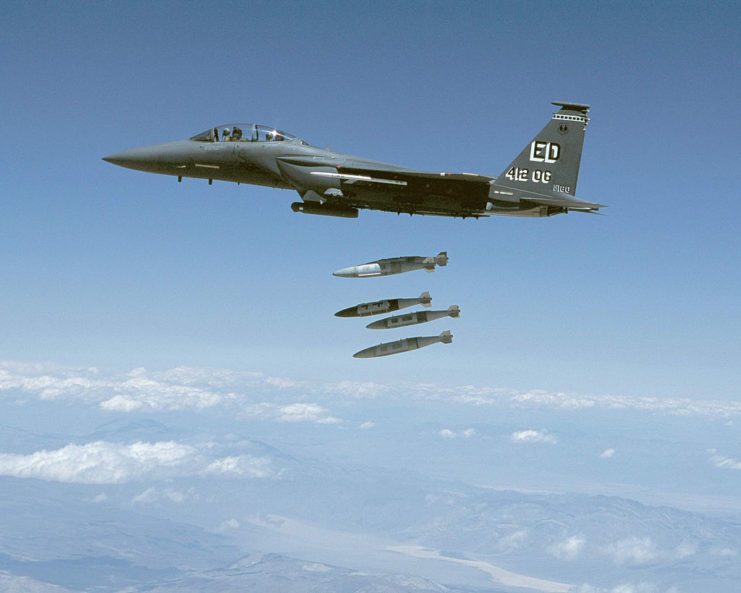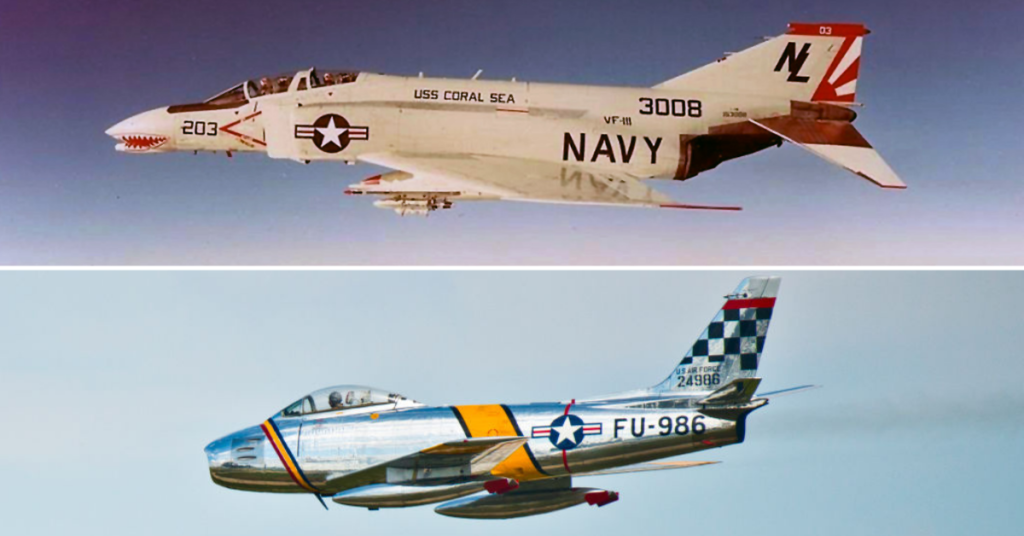
Over the course of history, world powers have worked relentlessly to build the best fighter aircraft. American manufacturers, such as McDonnell Douglas, Lockheed Martin and Boeing, regularly redesign, develop and upgrade their planes to keep up with the latest advancements in technology.
There are a number of fighter aircraft out there, but these are five of the best used by the US military, in the past and today.
McDonnell Douglas F-4 Phantom II
For much of the 1950s and ’60s, the US was focused on keeping up with the Soviet Union. In 1940, the Soviets debuted the Mikoyan-Gurevich MiG-1, and steadily improved the design of their fighter aircraft in the years that followed. While the US never directly went to war with the USSR, its forces did fight against Soviet equipment in Korea and Vietnam.
In response to the USSR’s air strength, McDonnell Douglas began work on the F-4 Phantom II in the 1950s. The designers of the fighter bomber added additional space for a second crewman, and focused on ensuring it was fast. Subsequent variants of the aircraft worked on improving any issues that hindered its performance in battle, with the F-4E later showing less of a focus on speed and thrust and more on maneuverability.
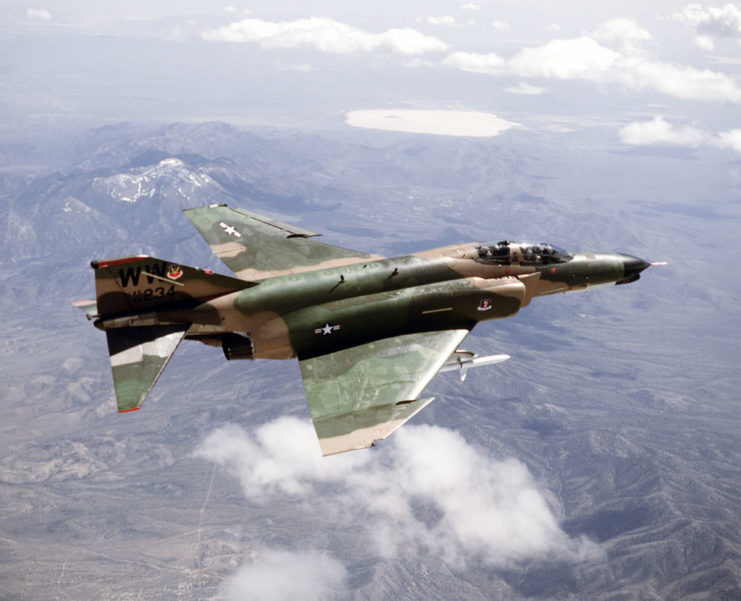
The US Navy adopted the F-4 in 1961, followed by the Marine Corps and Air Force, and it set a number of speed records upon entering service. It also saw heavy action in Vietnam and during the Gulf War‘s Operation Desert Storm – in particular, the F-4G Wild Weasels.
While the US military retired the aircraft from combat duty in 1996, it remains in use by a number of other countries, including South Korea and Iran.
The Boeing F/A-18E/F Super Hornet is an upgrade on the McDonnell Douglas F/A-18 Hornet. In the mid-1990s, the US Navy requested a larger multi-role fighter that would complement the Grumman F-14 Tomcat. Boeing stepped in with the Super Hornet, which is 20 percent larger than the original and can carry 33 percent more fuel, increasing its mission range by 41 percent.
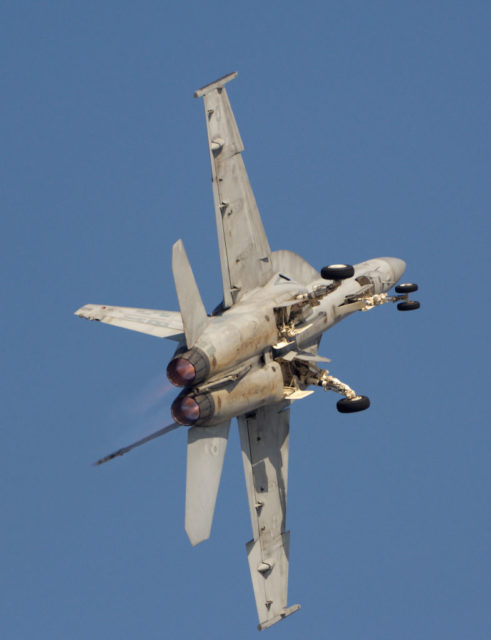
The Navy adopted the Super Hornet into its fleet in 1999, joining Strike Fighter Squadron 115 (VFA-115) at Naval Air Station Lemoore, California two years later. Being one of the newer fighters on this list, most of the missions carried out by the Super Hornet have occurred in the Middle East, most notably in support of Operation Iraqi Freedom.
Models of the aircraft are currently also flown by the Kuwaiti Air Force and the Royal Australian Air Force.
North American F-86 Sabre
In the early days of the Korean War, American pilots were having issues keeping up with the MiG-15s flown by the Soviet-supported Chinese and North Koreans. While the Lockheed P-80 Shooting Star put up a good fight, the North American F-86 Sabre soon emerged as the superior option.
Once the efficiency of the jet fighter was realized, it was put into mass production, with North American Aviation producing 7,800 between 1949-56.
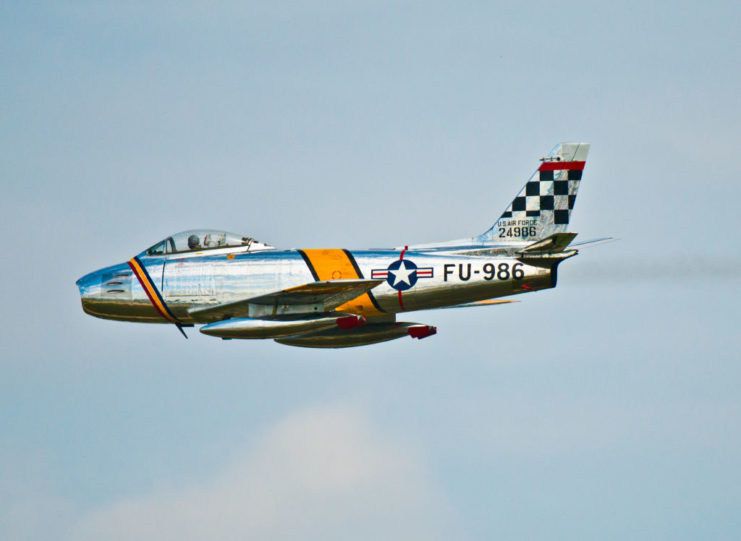
The F-86 was used extensively during the Korean War, participating in some of the earliest jet-to-jet air battles in history. In fact, it was so effective that many view it as one of the most important aircraft to fly during the conflict. Outside of Korea, the F-86 also saw action during the Cold War and the 1965 Indo-Pakistani War.
While the fighter was slowly phased out by the US Air Force, it and its variants continued to see service with a number of other countries.
Lockheed Martin F-22 Raptor
The Lockheed Martin F-22 Raptor was originally designed to replace the legendary McDonnell Douglas F-15 Eagle – and it’s capable of doing things pilots of the past could only dream of. The aircraft had its first flight in 1997 and was officially introduced into service with the US Air Force eight years later.
The F-22 is superior for a number of reasons, largely because it can launch ground attacks and electronic warfare, on top of its air duties. It can also conduct signals intelligence.
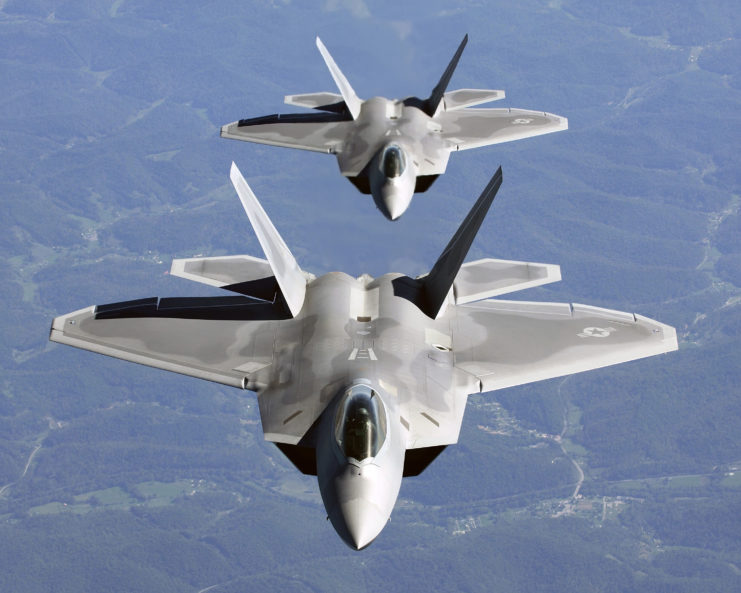
The single-seat fighter is also devastating in battle, thanks to its ability to disguise itself. It was designed to be difficult to detect on radar, meaning it can sneak up behind an enemy aircraft and stay undetected for a number of minutes. It’s also is capable of shooting down a combatant while outside of their range of detection.
Despite leaving production in 2011, the F-22 is still active today and is exclusively used by the US Air Force.
McDonnell Douglas F-15 Eagle
In 1969, McDonnell Douglas was tasked with creating an all-weather fighter that could keep up with the USSR’s MiG-25 interceptor and reconnaissance aircraft. The result was the F-15 Eagle, which was officially introduced into service with the US Air Force in 1976.
The F-15 quickly proved to be a superior tactical fighter, achieving 104 aerial victories with no recorded losses. It’s incredibly fast, with the ability to reach a speed of over 1,800 MPH, and is known for its agility. The F-15E Strike Eagle variant is even more powerful, featuring improved avionics and producing between 50,000 and 58,000 pounds of thrust.
